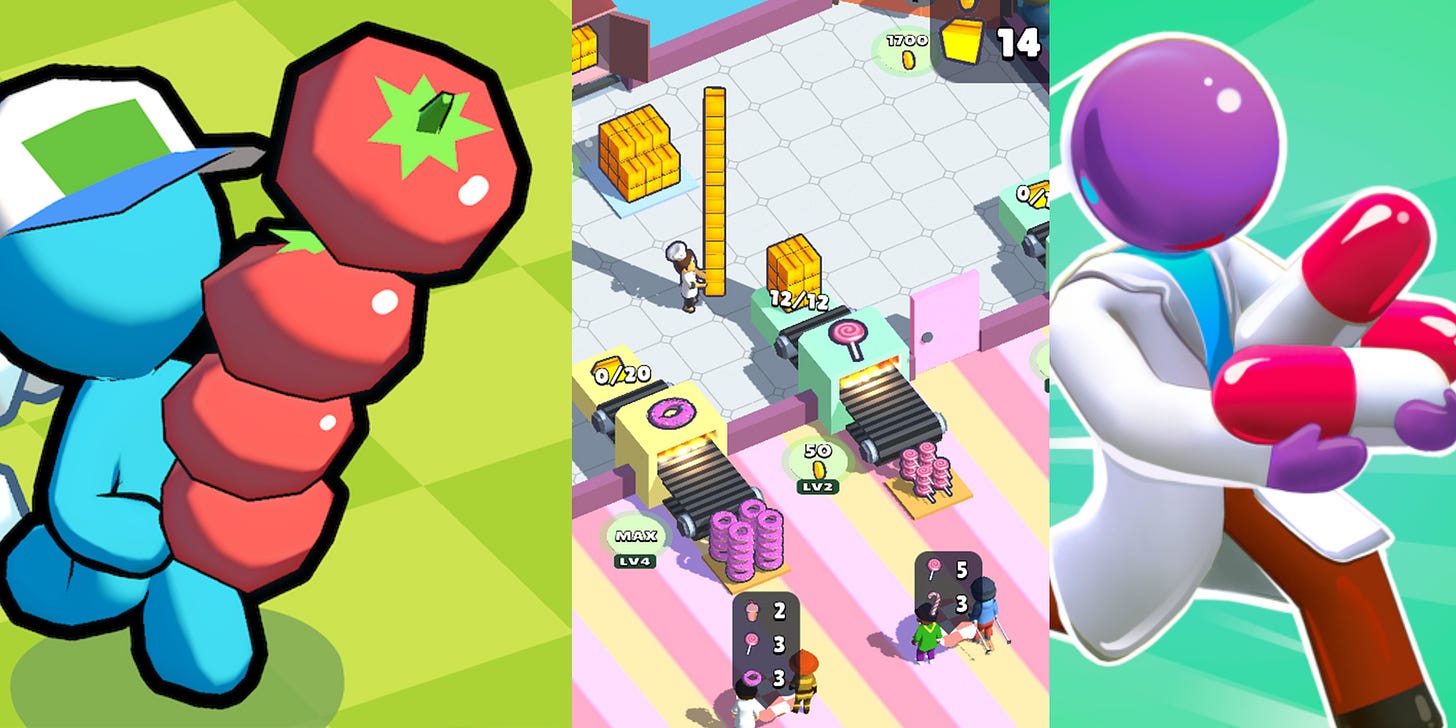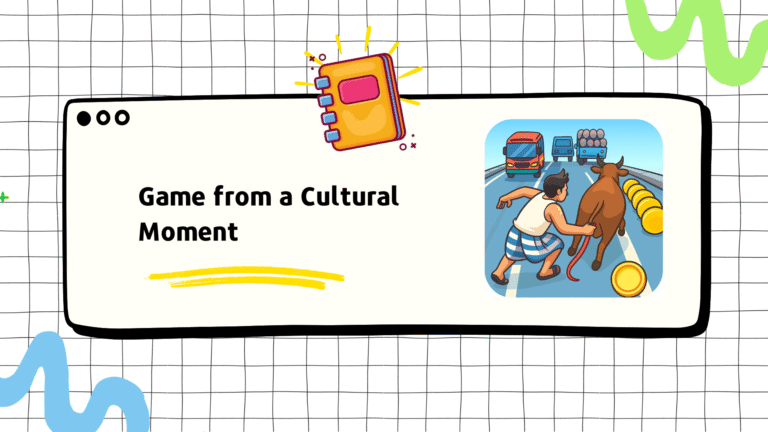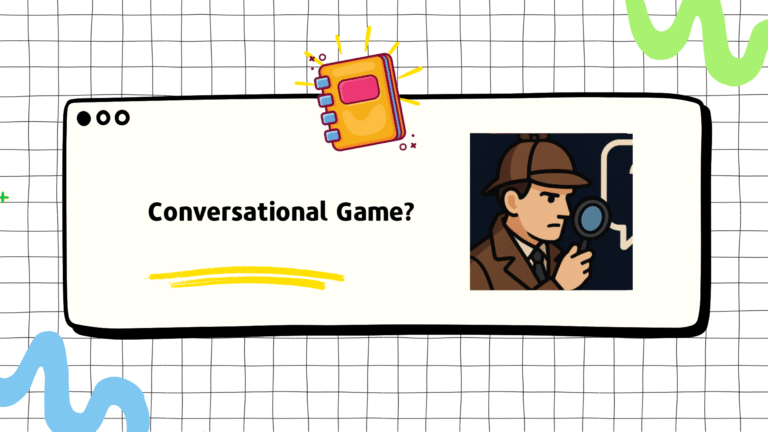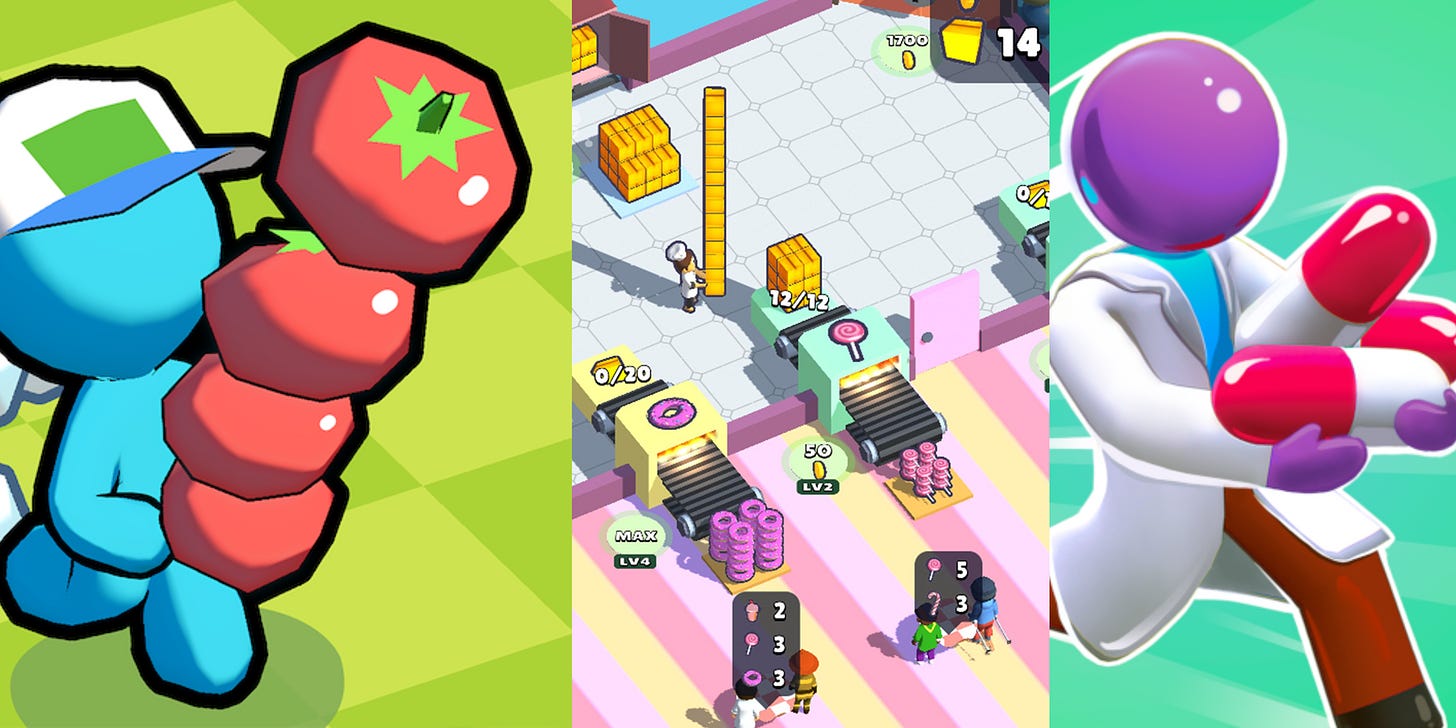
Arcade idle games are taking the hypercasual market by storm. It all started when Homa Games introduced a new genre ‘Arcade Idle’ where hypercasual meets hybrid casual. In late 2020, Farm Land and Craft Island were the first experimental games of this genre by Homa Games and both of them became successful. Since then the genre has evolved and we have been seeing more and more arcade idle games climbing the top charts.
Arcade idles are derived from the idle genre where slowly but surely you progress throughout the game and you get rewards. It has a promise of snowballing effect where as time passes you can grow exponentially. That promise is what motivates the player to play more and more.
Arcade Idle is a management game. And like all management games, it’s a game about optimization.
Let’s break down the game Cooking Craft by Voodoo. You prepare different food items and serve customers. Customers come in and ask for specific foods. You give them food, they consume the food and put money on the table and leave. If you think about it, each customer is a timer. A timer that comes in, you interact with the timer to start it, after the timer runs out it converts the food into money.

There are more timers in the game. The supply truck that brings the raw food is a timer, the machine that converts the boxes into foods is a timer. Timers are spread out in the map and you interact with a timer to start it and get some output after the timer expires. So basically the more timers you add, the more gameplay content you provide to the player
Let’s think about how the timers are connected together. All of the timers are a part of a process. For the game Cooking Craft, the process is ‘cooking and serving food‘. Here are the following steps
1. Get food supply
2. Convert supply to food
3. Serve food to the customer
4. Collect money from customer
These are the timed steps that make the whole process. Each step can be mapped to a visual representation
1. Truck comes to drop the supply
2. The machine takes in the supply to covert to food
3. Dropping food on customer tables
4. Customer eating
Simple and neat! You are the chain that connects the steps. Your job is to find the most optimized way possible to maximize revenue. Having one optimized way to do things is boring. The player can easily figure that out and repeat that. But when you add upgrades it gets interesting. You can upgrade the machine, improve step 2 or you can upgrade the supply and improve step 1.
These are all micro-decisions you are making as a manager. Each decision changes the gameplay and impacts the process. Each upgrade adds more and more possible optimized ways and makes the game interesting.
Adding content to the game is easy. You either go vertically or horizontally.
Vertical Addition is when you keep the core steps the same but add more options on steps. In Cooking craft, in step 2 (Convert supply to food) you start by making burgers. Then you add pizza to the equation and so on. Whichever food you are making, you are in step 2. This kind of addition can at first add depth to the game but when you do it more and more its impact gets lessened. But it is definitely easy to add and blends smoothly with the core. So it’s less risky to add
Horizontal addition is when you increase the steps. In Cooking Craft if you add an extra step of decorating food, it’s a horizontal addition. It adds to the process. It adds meaningful depth to the game. It has a big impact and it’s also risky. Because, if the step you added does not make sense to the player and does not match well with the other steps it can break the flow.
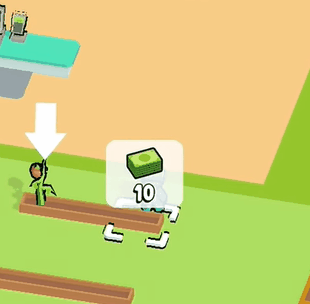
Let’s see a good example of both vertical and horizontal addition. My Mini Mart by Supersonic is a great game to demonstrate this.
You start with growing tomatoes and then selling them to customers. Here are the steps
1. Grow tomato (Timer that grows tomato)
2. Shelf tomato (Added to cart by the customer after an arbitrary timer)
3. Sell tomato (Customers buy the tomato at the checkout register after an arbitrary timer)
In a mart, it’s only natural to add more products (vertical addition). The developers introduced egg but it also introduces a new step (horizontal addition)
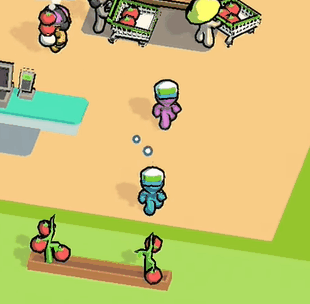
When you add egg to the equation, the steps look like this
1. Grow tomato
2. Process tomato by the hen to get an egg (a new timer )
3. Shelf egg
4. Sell egg
A perfect blend of vertical and horizontal additions! By adding tomato into the process of eggs it adds a bit of strategy. And in game design, it’s great when everything affects everything. The next time during an upgrade you will question yourself, Do I need more tomatoes now? Should I focus on increasing the tomatoes supply?
Of course, it does not mean that only if you do additions the game will have good playtime or retention. The core has to be strong, something that people want to do. And before making any horizontal additions be sure to think if it truly adds to the experience of the game.


